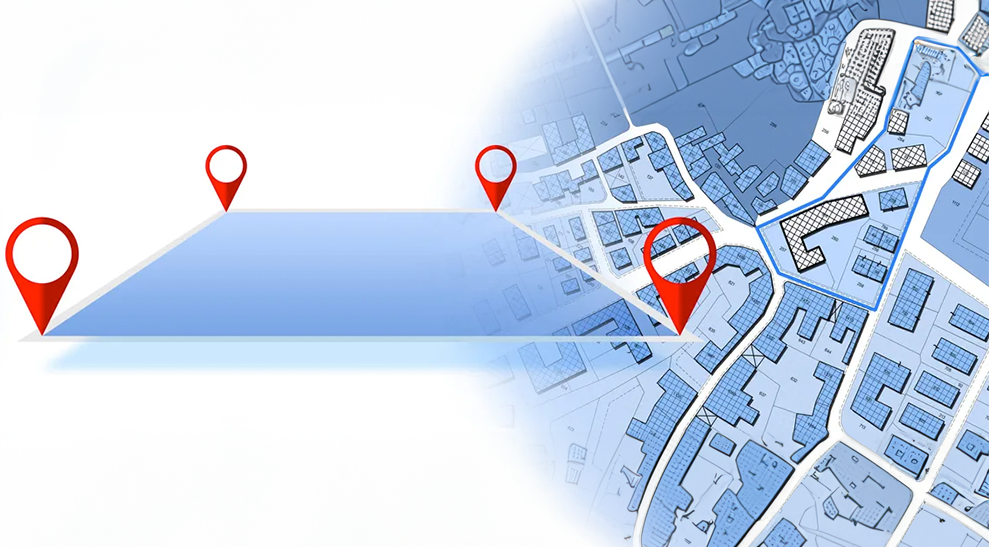The legacy processes using paper to document new construction are fraught with duplication. Lemur enables field technicians to record work digitally and eliminate the need to duplicate data in the office. GIS data are directly captured into the enterprise GIS. Relevant EAM data, such as compatible units (CUs), are directly captured in relevant enterprise systems. Business rules automate data entry and reduce the amount of information field technicians have to enter. This reduces the time needed to close projects and move from construction to availability for the entire organization.
This article was originally authored by Locana, which is now part of TRC. Replace paper and pencil with geospatial tools to transform field processes.
Everything starts with construction
As-built surveys are a foundation for network management, whether for electric, gas, or any other asset-intensive industry. They provide a detailed map of the commodity systems, such as a gas pipeline or water main, and include all the structural components. Field crews record information about newly constructed assets as they are built. They then incorporate the updated information into a record system at the office.
But in a world gone digital—with enterprise-level IT modernization changing operations—leaders in design, engineering, and construction need new ways of automating tasks to fit into corporate systems. This includes the capture and recording of as-built survey drawings. Even today, many companies rely on printed paper drawings and physical pencils for redlining. Or they use digital apps that perform simple drawing functions that lack accuracy, spatial context, or integration.
Enter Lemur’s modern mobile mapping. Lemur supplies an end-to-end digital workflow that streamlines the design and as-built process without complex data transfer requirements. When used with a GIS-enabled engineering design tool, Lemur provides pre-construction surveys directly to the designers via standard GIS protocols to improve the construction design. Once the design is complete, Lemur receives the plans in-app via GIS layers and performs the as-built survey documentation and redlining.
Field crews leverage a focused mapping experience and other tools like external GPS and bar code scanning to capture and edit assets in GIS and redline within the spatial context of GIS and work order data. The integrated system even works when data connections are lost in the field. Using modern mobile mapping, these new streamlined and reliable workflows replace time-consuming, cumbersome construction tasks with efficient, fast, and accurate processes.

Paper and pencil aren’t good enough
Organizations have used paper for over one hundred years to document construction. Over the last 20 years, the industry has introduced digital technologies, often multiple point solutions, to automate previously paper-based methods. This included replacing redlining construction drawings with a digital sketch over a digital construction representation.
In the past, as-built surveys were created by marking up paper construction plans to record how assets were built and to note when construction needed to stray from design. This time-consuming, inefficient process leads to data inaccuracies or latency. It also increases time spent on material procurement and maintenance operations because staff must physically search for assets or make guesses on the fly about work to perform in the field.
For example, new construction often starts when a field technician inspects the construction site for obstacles, foliage, ground conditions, existing buildings, or infrastructure, then sends results to the designer, traditionally in paper format. The design engineer receives the pre-construction survey and designs the plans while interpreting the field capture results as environmental guidelines. The construction crew takes the designs as part of the Job Folder (often printed CAD drawings) to the field to construct new assets and infrastructure. As they build, they make in-field adjustments based on conditions on the site.
As the crew builds, redlines are made on the designs to indicate where the construction varies from the plan, often on the physical printed CAD drawings. The redlined CAD drawings are sent (by various means) to the GIS team for entry into the GIS system of record. For some organizations, this can take longer than a year, which hinders other departments, such as billing, that need to locate the new infrastructure. For example, when a city water department performs maintenance, they need a precise underground location of the gas utility assets to avoid damaging or puncturing them. Along with tools, staking is dependent on up-to-date infrastructure maps.
Even as GPS units and barcode scanners became available to document new construction more accurately, they still needed a data transfer strategy and multiple steps to read, interpret, and enter into enterprise systems.
As more and more organizations carry out company-wide digital transformation, they need an automated solution that simplifies and improves all aspects of the as-built process. And that’s where geospatial technology, integrated with field service management systems, makes a difference.
Lemur improves the as-built process
Lemur’s modern mobile mapping streamlines the construction as-built survey process, making information focused, efficient, and readily accessible, improving operations, increasing safety, and reducing risk.
Staff can digitally send field site intel to designers, generate new asset records when they replace equipment or carry out new construction, and draw redlines with annotations to communicate changes. Plus, Lemur ensures the data is consistent with other systems, such as work order management (WMS), enterprise asset management (EAM), ERP, and CRM, since it is directly connected with the business system, even offline.
With integrated capabilities, Lemur lets field crews working on mobile devices view other system data, such as work orders on the map, to understand the spatial context of tasks. They can quickly identify gaps in data and trigger actions to correct or create new records. They can record pre-construction sketches, create new asset records while construction is happening, quickly populate equipment data with barcode scanning, and redline digitized designs, all within the GIS system of record.
Lemur keeps end-to-end workflows digitized and in concert with the system of record data, expediting data exchange to reflect what has been built. GIS data helps technicians understand property ownership, fire risk, and environmentally sensitive areas, enhancing pre-construction sketches and guiding the as-built work.
Easily configurable maps, forms, and business rules simplify customizing Lemur for specific workflows, like as-built construction surveys. In addition to digitally capturing the newly installed assets, it can capture pressure tests, inspections, and checklists. Field staff can instantly share data with the office, where remote work is reviewed, supplemented, and recorded. They can also populate new as-built data using GIS on the device to reduce data entry steps and time. This can include scanning ASTM 2897 bar codes for asset attributes.
In addition, field crews working in remote locations like new rural neighborhoods don’t have to worry about connectivity. Lemur works offline, meaning the application experience is the same whether or not there’s connectivity. Field crews never have the tools for the job, assets, or mapping information. Regardless of location, it enables redlining and GIS data editing to an integrated WMS and GIS data view.
Lemur delivers value to the field
Lemur’s configurable, intuitive user experience requires minimal training and ensures fast desktop and field worker adoption. Staff can update business data, reduce risk to ongoing new construction sites, develop efficient designs with map intelligence, and perform accurate in-field construction and as-built updates. It ensures faster, more precise, modernized, and data-driven operations while providing five core benefits.
Lemur reduces the time required to collect and record information. It improves the business process and eliminates many data entry duplications built into the legacy processes. Work orders can be organized, assigned, and executed using location to maximize performance and reduce downtime. In addition, data is instantly exchanged between Lemur and field service apps.
These field-collected GIS features eliminate the traditional need for office staff to interpret and manually redraw new construction updates from the field. Improvements in the quality of the data captured extend to the other types of construction documentation, such as pressure tests. Lemur allows for barcode scanning, which improves data capture efficiency and accuracy. Users can add missing data in the field and remove duplicates. As-built survey information returns to the core GIS and business systems in record time since those digital updates are received daily.
Lemur supplies enterprise-grade GIS functionality within a unified application environment for accessing work orders, assets, maps, forms, geospatial tools, and more. It removes the need for ETLs, CSVs, or manual paperwork to communicate between users and databases with instant data exchange and sync between solution and backend systems. Rather than managing dozens of individual apps to support an entire field program, Lemur provides a single solution with incredible speed and performance.
No matter the location, Lemur works online and offline while operating in the field. It removes the need for thousands of daily data handshakes between apps that increase risk and reduce the accuracy of your data. Users work without interruptions. Full-resolution base maps, asset records, asset details, and relevant EAM/WMS information are all available offline.

Achieve New
Possibilities
Partner With TRC’s Tested Practitioners


